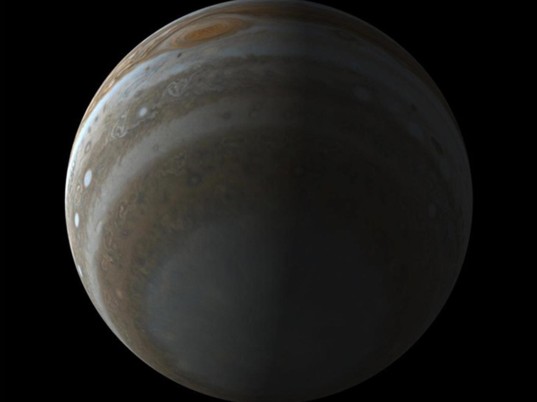The mission is designed to study Jupiter's interior, which we know very little about. It will also study the gas giant's magnetic and gravitational fields. Scientists will use data from Juno to try to understand how, when, and where Jupiter formed. It could have formed where it is now, but there is some evidence to suggest that it formed closer to the Sun and moved outward. If we learn more about Jupiter's formation, we will know more about the formation of the Solar System as a whole.
 |
| The first image of Jupiter released from JunoCam, taken on June 21, 2016, at a distance of 6.8 million miles (10.9 million kilometers) from the gas giant. Image Credit |
 |
| Simulated view of Jupiter's pole, likely similar to what Juno will see. Image Credit |
 |
| The first image of Jupiter taken by JunoCam. Image Credit |
The spacecraft has been cruising for 5 years, but its scientific phase is only planned for 2 years. Why such a short time? Jupiter captures intense radiation from the Sun. Mission planners have designed Juno to orbit close to Jupiter, in between Jupiter's atmosphere and the worst of the radiation, but they know the scientific instruments will likely be damaged over time. Still, within two years, Juno will have studied the entire sphere of Jupiter. The camera is only designed to last for the first 8 of the 33 planned orbits.
You can follow the mission at its website, where you can also watch a bunch of entertaining and educational videos about the mission featuring Bill Nye. Social media users can follow it on Facebook and Twitter as well. Watch live coverage of the orbital insertion starting at 9:30 PM CDT on July 4th, on NASA TV.
It's pretty exciting to have a new mission at Jupiter to follow! I'll be posting updates as new information and photos come in. You can learn more about what's happening in the Solar System, and what is happening with human exploration by visiting the Dome Planetarium at the Peoria Riverfront Museum. Follow us on Facebook and Twitter for daily updates!
| Make a comet! |

No comments:
Post a Comment